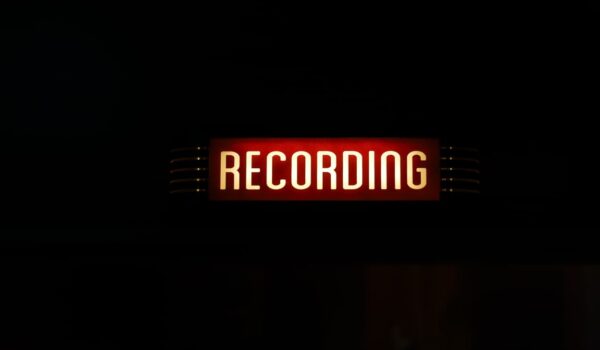Introduction
Whether you’re a podcaster, musician, audiobook narrator, or simply want to record yourself more clearly, getting good vocal recordings can be challenging. Even with decent equipment, poor technique and environment can sabotage your audio. However, improving your recording quality doesn’t have to be complicated or expensive with the right approach.
Follow these 5 key tips to start recording your voice more clearly without breaking the bank:
1. Get a Good Microphone for Your Needs
The most vital hardware for quality vocal recordings is a good microphone properly suited for your environment and use case. While professional studio-grade mics can cost hundreds to thousands, there are also quality USB and XLR mic options for under $100 or $200 that still provide good clarity.
Things to consider with microphones:
– Polar patterns: Choose a cardioid pattern to record from one direction and minimize ambient sounds around you, or an omnidirectional mic to capture sound from all directions.
– USB vs XLR: USB is plug-and-play and meant to connect directly to computers. XLR requires an audio interface but offers more control and upgradeability over time.
– Condenser vs dynamic: Condensers capture more detail and nuance. Dynamics handle very loud sources better and don’t need external power. Choose based on your needs.
No matter your budget, do some research to find a microphone with solid frequency response and directionality for vocal recording. This can make a big difference in sound quality.
2. Optimize Recording Space and Isolation
Your environment and microphone setup plays a massive role in vocal recording quality. Even an expensive mic will sound bad in an untreated room with echoes and ambient noise around you.
To optimize:
– Record in a carpeted room. Rooms with hardwood or tile will echo more. Close windows to minimize outside noises.
– Face acoustic treatment like foam panels, blankets, etc. towards you to absorb sound reflections. DIY panels are inexpensive.
– Record close to the mic and speak across axis, not directly into it. This maximizes gain before feedback and avoids plosives.
If recording at home isn’t practical, consider renting professional studio time for better acoustics and isolation. Minimizing background noise and echoes makes a remarkable difference in audio clarity.
3. Use an Audio Interface for XLR Mics
If you have an XLR microphone, you’ll need an external audio interface with an XLR input to connect it to your computer. Interfaces convert the mic’s analog signal into digital for recording and provide external power that condenser mics need to operate.
Even a basic $50 or $100 interface can majorly step up XLR mic quality compared to plugging straight into a computer audio jack. Moving beyond basic units, look for:
– High resolution A/D converters for clearer preamp gain staging
– +48v phantom power for condenser microphones
– Direct hardware monitoring to hear your voice with minimal latency
Popular interface choices for home studios include the Focusrite Scarlett Solo, PreSonus AudioBox, or the Universal Audio Volt series. If primarily recording just your voice, even an entry-level model makes a worthwhile difference.
4. Optimize Recording Software and Settings
Choosing the right recording software and dialing in the best settings for your microphone, room, and voice is key as well. This optimizes gain staging throughout the signal path for best clarity while avoiding distortions from peaks or ambient noise.
In any recording program, fine tune:
– Input levels: Leave ample headroom, around -12 to -6 dB peak max. This prevents clipping.
– Noise gate: Cuts room tone when not speaking. Set threshold just below speech volume.
– Compression: Evens out dynamics. Use lightly for voice starting around 3:1 ratio, 2 ms attack, 200 ms release.
The best vocal recording software for beginners would be free programs like Audacity or Garageband, which provide visual guides to setting levels properly. Moving up, affordable choices like Adobe Audition or Pro Tools First also offer great tools optimized for voice.
5. Learn Vocal Production Mixing Techniques
Even if capturing vocals clearly, poor post-processing can leave tracks sounding flat, amateurish, or masked by artifacts. Basic mixing techniques make a remarkable difference though approachable for beginners:
– Use EQ to reduce problem resonances and boost presence around 2-5khz
– Add subtle plate or chamber reverb effects to give a sense of space
– Use light compression with make-up gain to add density and push vocals forward
Watch video tutorials on vocal mixing tailored to your genre. With the right mic choice, environment, and software settings, mixing becomes easier and faster to get radio-ready results.Be very careful though around boosting high-mid frequencies which contributes to listener fatigue over time.
Master these 5 fundamentals first for the best vocal recordings, before spending on more advanced gear. An optimized signaling chain combined with producing techniques can make nearly any microphone sound professional.
Conclusion
Getting truly crisp, professional voice recordings requires more than just an expensive microphone alone. You need proper set up, technique, gear synergy, and post processing finesse tailored to your specific voice.
Focus first on choosing the right microphone type for your needs and environment. Address sound treatment issues by recording in damped spaces, facing acoustic panels. Use an audio interface if necessary to connect and power condenser XLR mics. Record through suitable software and optimize input gain staging plus editing. Finally, learn basic vocal mixing techniques to give tracks polish and presence.
Follow these 5 key tips outlined above to start seriously upgrading your vocal recordings on a budget. Before buying more advanced equipment, master these fundamentals first and make the most of what you have. With some thoughtful effort put into your recording approach, you can capture truly radio-ready voice tracks from home.
